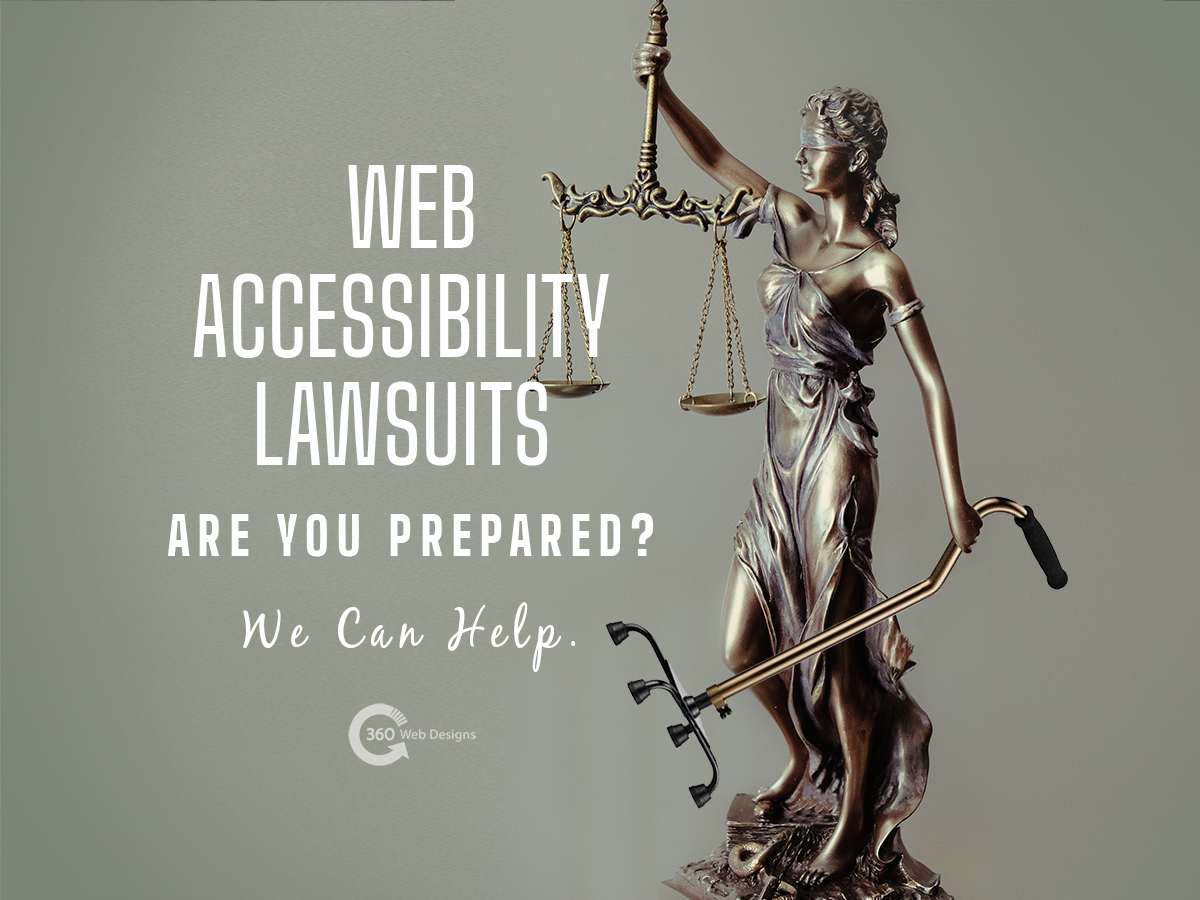Fill out our form, and we'll connect with you within 1 to 2 business days.
Phone: (925) 989-7737

In the last 3 years, there has been an upsurge in web accessibility lawsuits. Are you prepared and is your business protected? There is a general lack of understanding in the online business world of the requirements for web accessibility. In 1990, when Congress enacted the ADA, Title III was not intended to cover this brand-new internet. In all fairness, who could have known the internet would have become an online shopping mecca.
Title III of the ADA, prohibits discrimination on the basis of a disability “in the full and equal enjoyment of the goods and services of any place of public accommodation.” However, over time it became generally accepted that websites are places of public accommodation. For instance, in 2017, a man who is blind filed a lawsuit with Domino’s Pizza because their website and mobile app were not accessible. The lower court ruling decided that accessibility not only applies to businesses that are in buildings but their online stores as well. The Supreme Court stood by the lower court. This received national attention. Unfortunately, leaving 98% of remaining inaccessible websites, feeling very vulnerable.
In July 2016, a man who is legally blind sued his local Wynn-Dixie’s grocery store for not having web accessibility. Winn-Dixie’s website was primarily for refilling prescriptions for in-store pick-up and online coupon access for their physical store. Both of which you could also access at the physical store locations. But the court ruled that Winn-Dixie Stores had violated Title III by failing to offer access to their websites to those who are visually impaired.
Nevertheless, five years later, the Eleventh Circuit ruled in Gil versus Winn-dixie Stores, that websites are not covered as places of public accommodation under Title III. The Court then reversed and vacated their decision against Winn-Dixie Stores. Winn-Dixie Stores did not offer access to their store products on their website. Thus, not allowing anyone accesses to the purchasing of goods/services online. This is where Courts drew the line in the sand. The fact that their website did not contain an e-commerce component that was linked back to their store, categorized it as a “limited use” website.
According to Usablenet, more than 66% of Top 500 online retailers were named in an ADA web or app-accessibility lawsuit from 2017 through 2019. More than 40% of those sued, faced multiple claims. These lawsuits are not limited to retail, but also apply to doctors’ offices, restaurants, beauty salons, and car repair shops. If you have an e-commerce website, and you sell your products from there, consider yourself vulnerable.
The majority of lawsuits filed are from individuals who are visually impaired. A website must be coded properly for them to access a “screen reader” software. This software reads to them wherever they put their mouse on a page. Otherwise, they have no way of accessing your information. Unfortunately, there are many of the plaintiffs’ law firms that will then target similar companies for the same types of claims. These are known as “Surf-By” lawsuits. A claimant will act as “testers” and visit specific websites for the sole purpose of finding accessibility violations. One plaintiff will file hundreds of these lawsuits. This is where any random business can be brought down with no warning.
If you have an e-commerce website, you must comply with Web Content Accessibility Guidelines (WCAG) 2.1. Otherwise, you are a lawsuit waiting to happen. If your website is not e-commerce, I would still highly recommend having accessibility for the visually impaired and the deaf. People need to be able to access your information.
We at 360 Web Designs are here to help. Whether it be accessibility counsel, website overhaul with ADA plug-ins, or a brand-new site, we would love to help secure your business.
https://www.w3.org/WAI/standards-guidelines/wcag/
https://www.ada.gov/
https://www.360webdesigns.com/wordpress-accessibility-plug-ins-tangible-for-the-user/